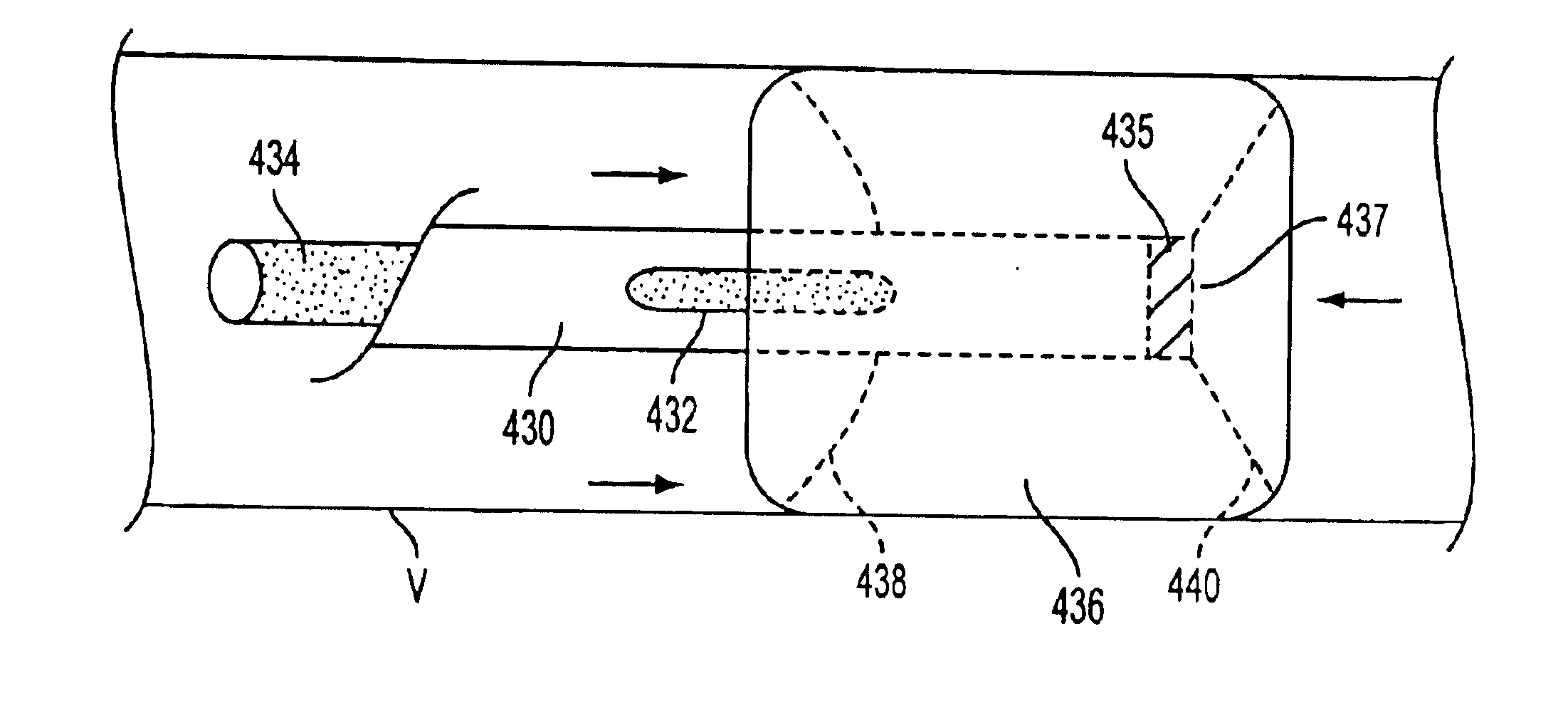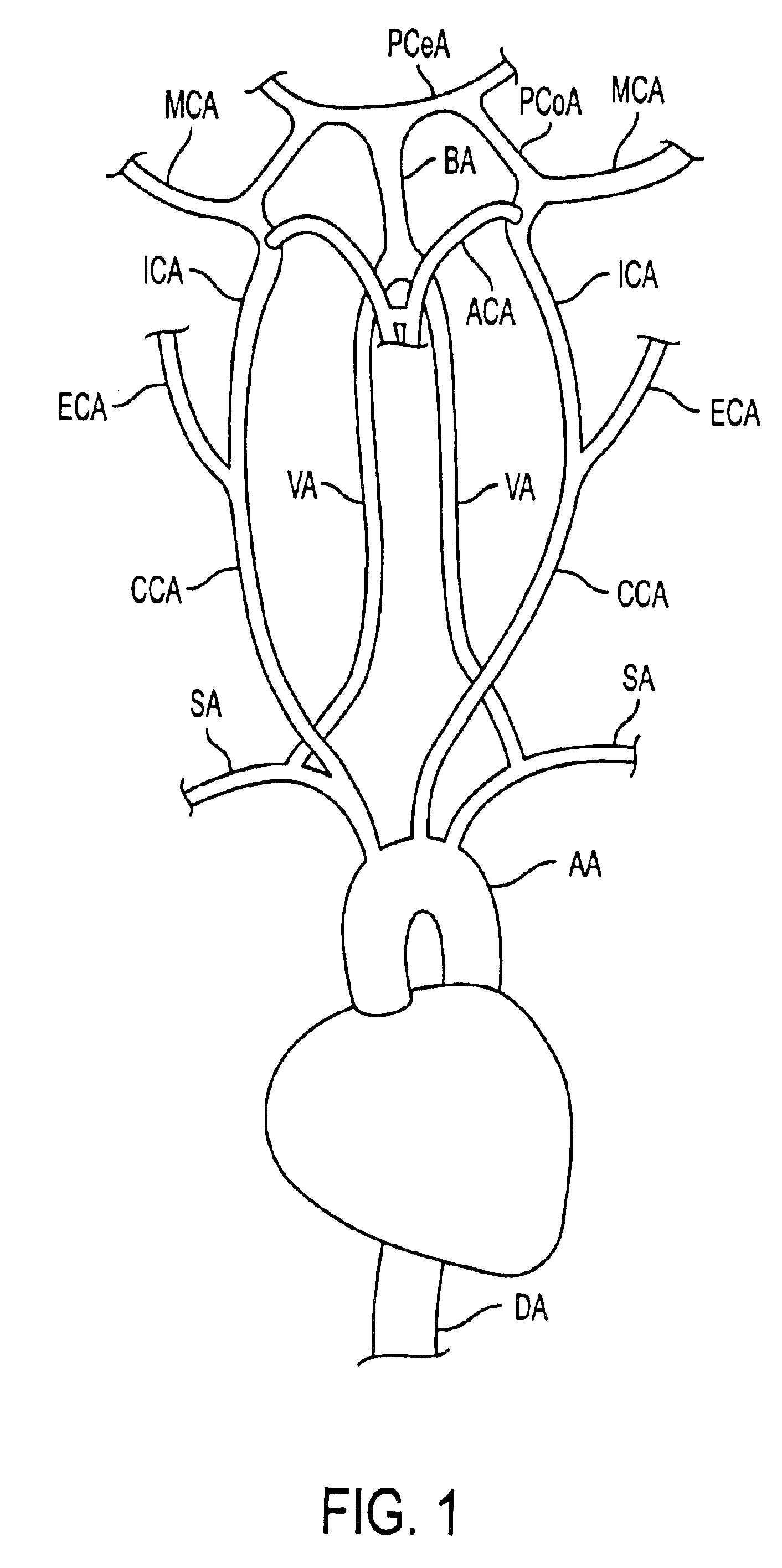Many current technologies for treating stroke are inadequate because emboli generated during the procedure may travel downstream from the original occlusion and cause
ischemia.
A drawback associated with such technology is that delivering drugs may require a period of up to six hours to adequately treat the occlusion.
Another drawback associated with lytic agents (i.e., clot dissolving agents) is that they often facilitate bleeding.
However, in the event that emboli are generated during mechanical disruption of the
thrombus, it is imperative that they be subsequently removed from the vasculature.
Such treatment methods do not attempt to manipulate flow characteristics in the cerebral vasculature, e.g, the Circle of Willis and
communicating vessels, such that emboli may be removed.
For example, if the first
balloon of the first tubular member is deployed in the left
common carotid artery, as shown in FIG. 7C, aspiration of blood from the vessel between the
balloon and the occlusion may cause the vessel to collapse.
On the other hand, if the
balloon is not deployed, failure to stabilize the distal tip may result in damage to the vessel walls.
In addition, failure to occlude the vessel may permit antegrade
blood flow to diverted into that apparatus, rather than blood distal to the first tubular member.
However, when that balloon is deployed, the contralateral
artery may be starved of sufficient flow, since the only other flow in that
artery is that aspirated through the first tubular member.
On the other hand, if the balloon of the second tubular member is not inflated, no flow control is possible.
First, the use of a vacuum to aspirate the occlusion requires an
external pressure monitoring device.
The application of too much
vacuum pressure through the aspiration port may cause trauma, i.e., collapse, to the vessel wall.
The use of a chopping mechanism, however, may generate such a large quantity of emboli that it may be difficult to retrieve all of the emboli.
In addition, emboli generated by the action of the chopping mechanism may accumulate alongside the catheter, between the aspiration port and the distal balloon.
Yet another drawback of the device described in the Barbut '199 patent is that high-pressure
perfusion in collateral arteries may not augment
retrograde flow distal to the occlusion as hypothesized.
Antegrade
blood flow from the heart in unaffected arteries, e.g., other vertebral and / or
carotid arteries, may make it difficult for the pressure differential induced in the contralateral arteries to be communicated back to the occluded artery in a retrograde fashion.
One drawback associated with the technique described in the Frazee patent is that the pressure in the transverse venous sinuses must be continuously monitored to ensure that
cerebral edema is avoided.
Because the veins are much less resilient than arteries, the application of sustained pressure on the venous side may cause
brain swelling, while too little pressure may result in insufficient blood delivered to the arterial side.
A primary drawback associated with the Wensel device is that the deployed coil contacts the intima of the vessel, and may damage to the vessel wall when the coil is retracted to snare the occlusion.
Additionally, the configuration of the coil is such that the device may not be easily retrieved once it has been deployed.
For example, once the catheter has been withdrawn and the coil deployed distal to the occlusion, it will be difficult or impossible to exchange the coil for another of different dimensions.
Like the Wensel device, the Engelson device is depicted as contacting the intima of the vessel, and presents the same risks as the Wensel device.
 Login to View More
Login to View More  Login to View More
Login to View More 


